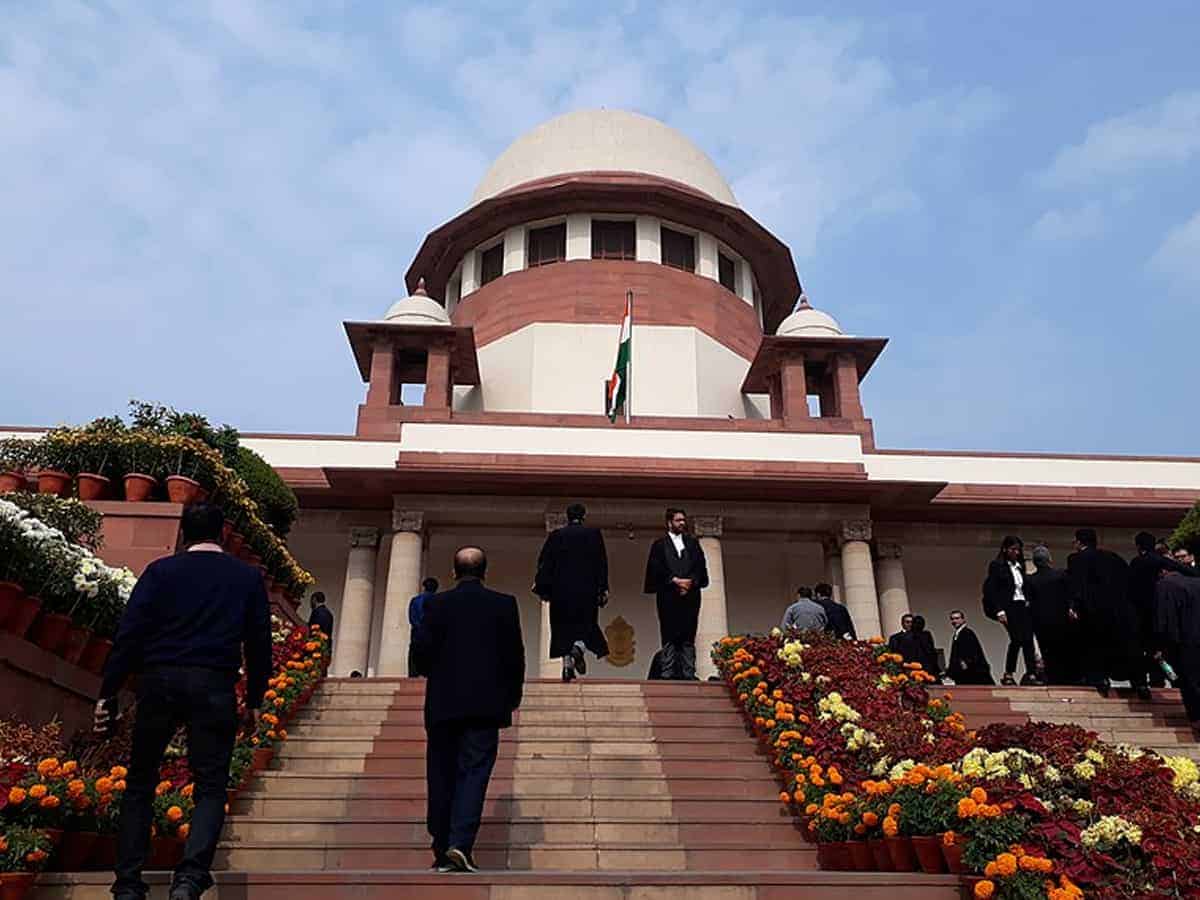
New Delhi: Stressing on the need for striking a proper balance between sustainable development and environmental protection, the Supreme Court on Tuesday appealed to the legislature, the executive and policy makers to make necessary provisions for carrying out environmental impact assessment studies before permitting urban development.
The apex court observed it is “high time” that the legislature, the executive and policy makers at the Centre as well in states took note of the damage to environment on account of “haphazard developments” and take a call to initiate necessary measures to ensure that development does not damage the environment.
“It is necessary that a proper balance is struck between sustainable development and environmental protection,” said a bench of Justices B R Gavai and B V Nagarathna.
“We therefore appeal to the Legislature, the Executive and the policy makers at the Centre as well as at the state levels to make necessary provisions for carrying out environmental impact assessment studies before permitting urban development,” it said.
The top court’s made the observations while passing an order prohibiting fragmentation or apartmentalization of residential units in phase-I of Chandigarh, saying it will injure the “lungs” of the city as conceptualised by French architect Le Corbusier who had designed it.
In its verdict, the apex court quoted India’s first Prime Minister Jawaharlal Nehru, who while laying down the founding principles of a new city for capital of the State of Punjab, had said, “Let this be a new town, symbolic of freedom of India unfettered by the traditions of the past an expression of the nation’s faith in the future.”
The bench noted, “Chandigarh has been planned as a low -rise city, and has been so developed that even after sixty years of its inception, it retains the original concept to a large extent. This is how the concept of this ‘beautiful city’ was born.”
It also noted that phase-I was designed for low- rise plotted development for a total population of 1,50,000 and phase -II sectors were to have a much higher density as compared to phase- I sectors.
The top court said in 2010, a committee of experts was constituted to look at both the original concept of the city of Chandigarh as well as the maintenance of important heritage buildings in the UT of Chandigarh.
The bench, which referred to clauses of the Chandigarh Master Plan-2031 (CMP), noted a perusal of the plan itself would reveal that the expert committee observed that Chandigarh’s inscription on UNESCO’s World Heritage list will bring many benefits as the city would join a select list of other modern cities or urban areas currently listed there.
“In our view, in this background, providing something which would adversely affect the heritage status of the Le Corbusier Zone, without the approval of the Heritage Committee (Chandigarh Heritage Conservation Committee), would not be permissible,” it said.
The bench said judicial notice can be taken of the creation of the city of Brasilia as the capital of Brazil.
“From the website of the ‘UNESCO World Heritage Convention’, it could be seen that the city was planned by urban planner Lucio Costa and architect Oscar Niemeyer. It will be interesting to note that while planning the said city, urban living as promoted by Le Corbusier and his treatise titled ‘How to Conceive Urbanism’ served as an inspiration,” it said.
The bench said it is worthwhile to note that in spite of various changes, Lucio Costa’s pilot project still remains preserved.
It noted the website would also show that similar steps have been taken for protecting the White City of Tel Aviv and the city of Le Havre, rebuilt by Auguste Perret.
“We find that similar steps need to be taken by the Chandigarh administration as well as the Government of India for protecting the heritage status of Le Corbusier’s Chandigarh,” the bench said.



